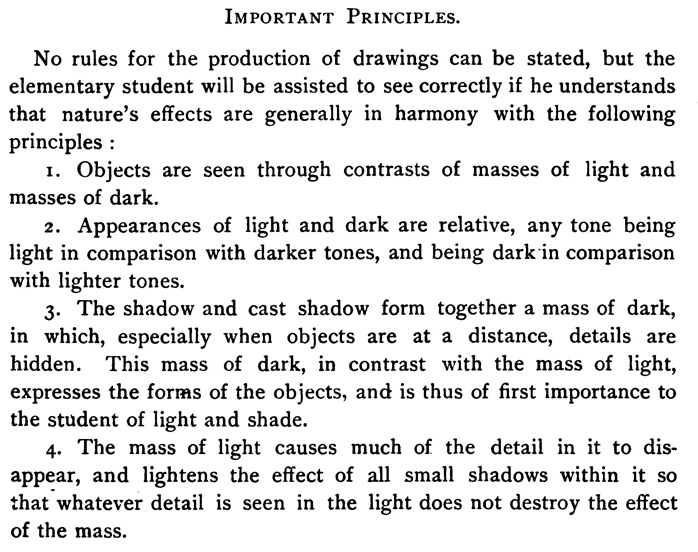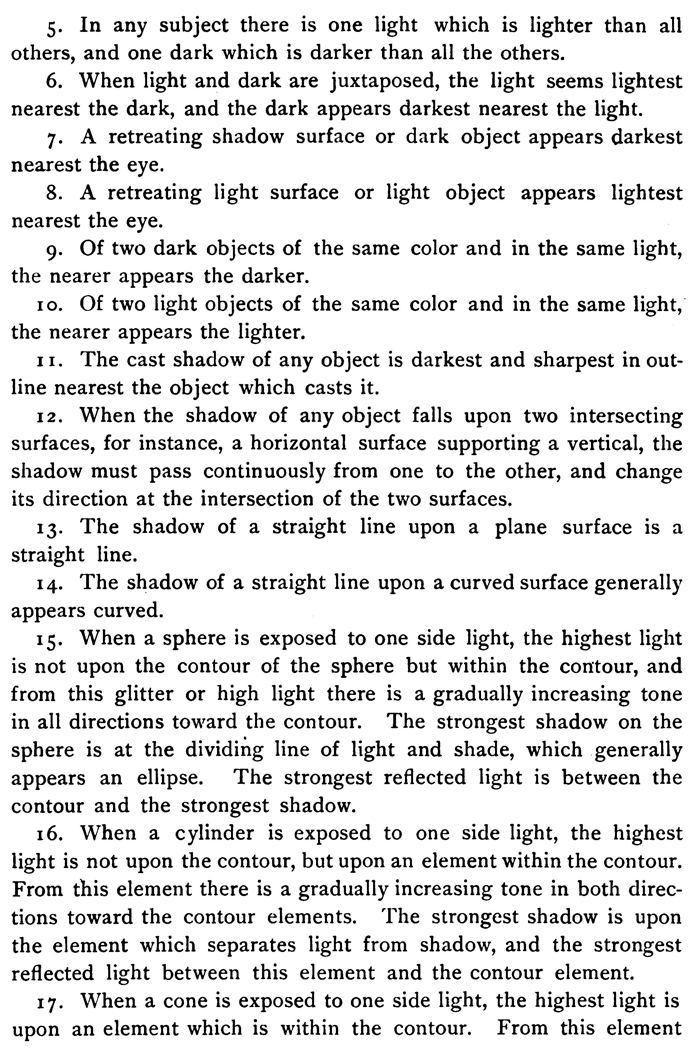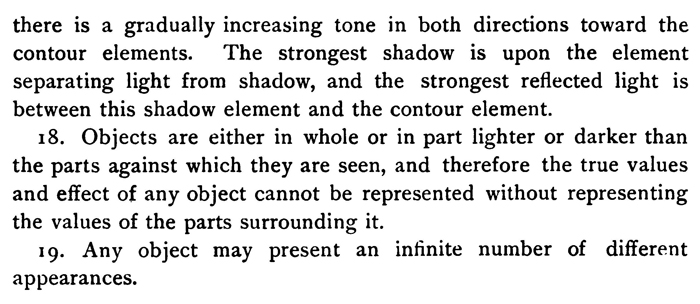
|

 
IMPORTANT PRINCIPLES.
No rules for the production of drawings can be stated, but the elementary student will be assisted to see correctly if he understands that nature's effects are generally in harmony with the following principles:
1. Objects are seen through contrasts of masses of light and masses of dark.
2. Appearances of light and dark are relative, any tone being light in comparison with darker tones, and being dark in comparison with lighter tones.
3. The shadow and cast shadow form together a mass of dark, in which, especially when objects are at a distance, details are hidden. This mass of dark, in contrast with the mass of light, expresses the forms of the objects, and is thus of first importance to the student of light and shade.
4. The mass of light causes much of the detail in it to disappear, and lightens the effect of all small shadows within it so that whatever detail is seen in the light does not destroy the effect of the mass.
5. In any subject there is one light which is lighter than all others, and one dark which is darker than all the others.
6. When light and dark are juxtaposed, the light seems lightest nearest the dark, and the dark appears darkest nearest the light.
7. A retreating shadow surface or dark object appears darkest nearest the eye.
8. A retreating light surface or light object appears lightest nearest the eye.
9. Of two dark objects of the same color and in the same light, the nearer appears the darker.
10. Of two light objects of the same color and in the same light, the nearer appears the lighter.
11. The cast shadow of any object is darkest and sharpest in outline nearest the object which casts it.
12. When the shadow of any object falls upon two intersecting surfaces, for instance, a horizontal surface supporting a vertical, the shadow must pass continuously from one to the other, and change its direction at the intersection of the two surfaces.
13. The shadow of a straight line upon a plane surface is a straight line.
14. The shadow of a straight line upon a curved surface generally appears curved.
15. When a sphere is exposed to one side light, the highest light is not upon the contour of the sphere but within the contour, and from this glitter or high light there is a gradually increasing tone in all directions toward the contour. The strongest shadow on the sphere is at the dividing line of light and shade, which generally appears an ellipse. The strongest reflected light is between the contour and the strongest shadow.
16. When a cylinder is exposed to one side light, the highest light is not upon the contour, but upon an element within the contour. From this element there is a gradually increasing tone in both directions toward the contour elements. The strongest shadow is upon the element which separates light from shadow, and the strongest reflected light between this element and the contour element.
17. When a cone is exposed to one side light, the highest light is upon an element which is within the contour. From this element
there is a gradually increasing tone in both directions toward the contour elements. The strongest shadow is upon the element separating light from shadow, and the strongest reflected light is between this shadow element and the contour element.
18. Objects are either in whole or in part lighter or darker than the parts against which they are seen, and therefore the true values and effect of any object cannot be represented without representing the values of the parts surrounding it.
19. Any object may present an infinite number of different appearances.
|







